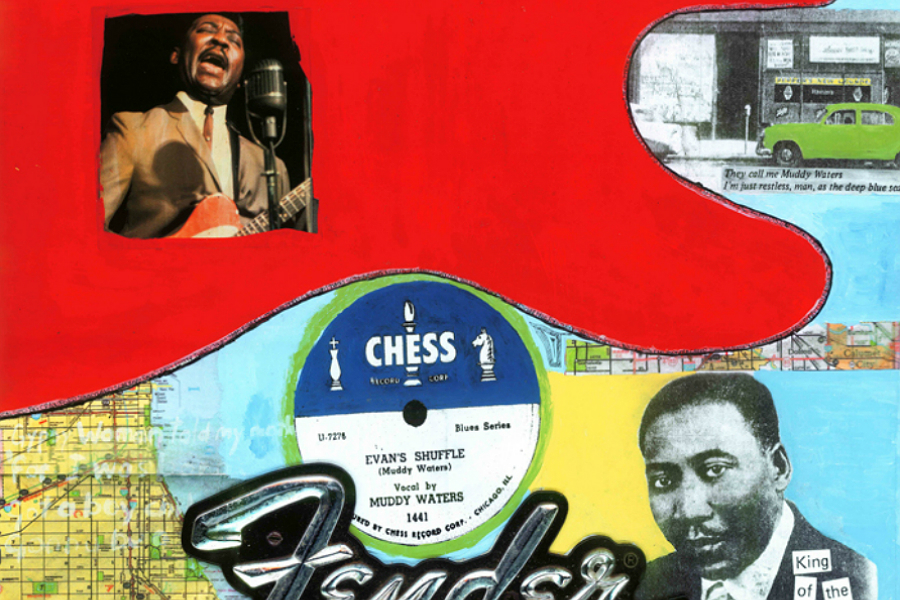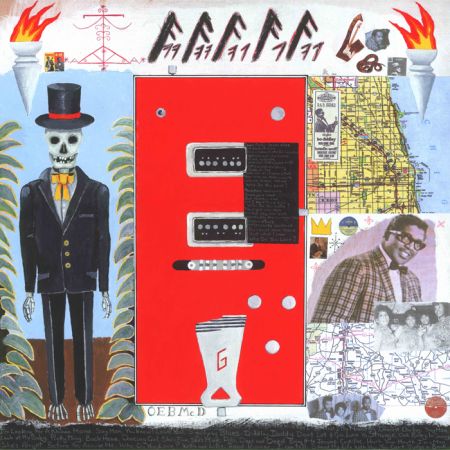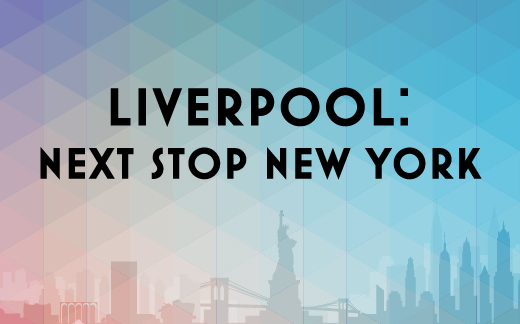Liverpool, Next Stop New York: How Pop Art Embellishes 1950s Aesthetics

How can Pop Art be redefined for the 21st century? Deb Laing finds Liverpool-based artists inspired by Black American culture trying to do just that at a special exhibition for Liverpool International Music Festival (LIMF)…
The Liverpool, Next Stop New York exhibition is part of a larger musical project, initiated by Liverpool International Music Festival (LIMF), that has deployed the work of North West artists that share a fascination with American culture in Liverpool; and in particular, the impact of Black American music on the city.
The location is a smart one: View Two Gallery, placed as it is in Liverpool’s musical tourist hotspot, Mathew Street, is close to the Cavern Club and references to The Beatles abound. The band was one of many Liverpool groups that drew early influence from American artists, from Chuck Berry and Eddie Cochran to The Marvelettes — incorporating many covers into their early live shows in the 1950s and 1960s.
But how does this translate into an art exhibition? Perhaps unsurprising, there is a large Pop Art influence in Liverpool, Next Stop New York; an art movement from the same period which has long been seen to be subversive; playing, as it does, with multiple meanings in American culture. Does this contemporary interpretation, however, offer something new? A 21st century sensibility maybe?
Traditionally, Pop Art celebrated US culture, finding its origins in UK with the formation of a radical group of young British artists that included Richard Hamilton, Nigel Henderson and Sir Eduardo Paolozzi in the early ’50s. In the US, the movement challenged abstract expressionism; artists such as Roy Lichtenstein disregarded the notion of the lone male artist and the painterly fields they represented on large canvas. Since Andy Warhol, perhaps the most famous of all Pop artists, the influences of appropriated imagery continues across the Atlantic.

In comparison, the transcultural exchange of music in the UK, linked with emigrants travelling from colonised cultures, fuelled indigenous areas such as Toxteth in Liverpool, and white youths establishing their own playlists of Black American music — pre-Spotify, pre-music TV.
But back to View Two. The Ezra collective in Liverpool, Next Stop New York has deployed bold and clean block colour graphics, vintage type sets and ’50s poster imagery; signifying Nouveau realism rather than Pop Art. It contrasts with work from Horace Panter and Mike Badger, who utilise the raw energy of ’50s music; Badger’s guitar trumpet hybrid sculpture contains photographs of iconic musicians connected with the Cavern and with the Cunard ocean liners — who have famously carried passengers from Liverpool to New York for 175 years.
Badger’s work on The La’s and Panter’s on The Specials in particular have captured Pop Art’s sense of fun. Arguably, contemporary mainstream music and the fusion of musical genres have clouded the origin of black music; both artists aforementioned borrow from original sources and anchor the importance of the original. The collage format offers a revisionist stance based on their own personal experience as musicians. A central defining influence for Panter, for instance, is Bo Diddley, represented in his series of mixed-media collage.
Both Panter and Badger apply graphic imagery: bold blocks of screenprint pay homage to Warhol and Rauschenberg, but can also be seen to reference the Scottish born Paolozzi,’s collection of re-arranged American magazines — Americanised candy for the eyes.

This exhibition makes me think of artistic expression throughout the 20th century; studies on Black people were popular in the early half, who were considered inspirational and exotic both in Paris and New York. In comparison, artists in the latter half, particularly the 1980s, took representations of race one step further by defying simplified stereotyped images; for example, white people perceiving African Americans as having natural musicality and rhythm — a central theme of early Hollywood movies deploying the black actor on the basis that ‘song and dance’ was an ideal and sole discourse of race. Artist Sonia Boyce’s ’80s mixed media montages, such as From Tarzan to Rambo, exposed the hypocrisy of racist imagery connected with African culture.
In contrast, the Liverpool, Next Stop New York exhibition symbolises the brilliance of Black musicians as a collective celebration: a nostalgic re-visitation of the colour palettes used by early print-based texts taken from popular culture of the 1950s and ‘60s; and an invigorated homage to early British Pop Art pioneers such as Peter Blake and Richard Smith.
It seems that Pop Art has never been so interesting to audiences. This exhibition is timely in Liverpool, with the return of big cruise liners to its port; cross-cultural exchanges are vital to how the past is interpreted. Embedded in art forms, art negates what is present and what is not. Artists in Liverpool, Next Stop New York negate musically inspired pieces for further discussion and inspection.
The exhibition based in Matthew Street may be viewed as a stop-gap in between Beatles-themed bars and shops; the former warehouse that houses the gallery is a welcome break, blending easily into the musical ethos shrouding the area. May I also suggest viewing work curated by Glenn Ligon: Encounters and Collisions at Tate Liverpool until 18 October 2015; a show which presents an additional and wider take on Black African history and the visual arts.
Deb Laing
The Liverpool: Next Stop New York exhibition is open by appointment at View Two Gallery until Monday 31 August 2015 — contact the gallery here
Read more about the wider Liverpool: Next Stop New York project here
Read A Guide To Pop Art: Paolozzi And The Original Young British Artists





